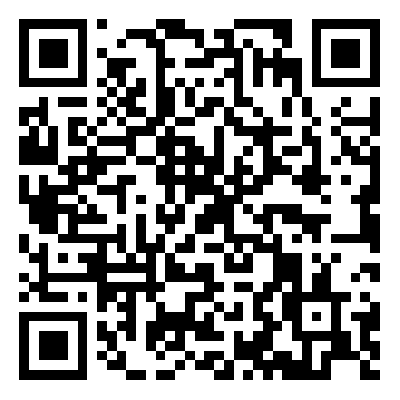
Ultima Markets App
Trade Anytime, Anywhere
Important Information
This website is managed by Ultima Markets’ international entities, and it’s important to emphasise that they are not subject to regulation by the FCA in the UK. Therefore, you must understand that you will not have the FCA’s protection when investing through this website – for example:
- You will not be guaranteed Negative Balance Protection
- You will not be protected by FCA’s leverage restrictions
- You will not have the right to settle disputes via the Financial Ombudsman Service (FOS)
- You will not be protected by Financial Services Compensation Scheme (FSCS)
- Any monies deposited will not be afforded the protection required under the FCA Client Assets Sourcebook. The level of protection for your funds will be determined by the regulations of the relevant local regulator.
Note: Ultima Markets is currently developing a dedicated website for UK clients and expects to onboard UK clients under FCA regulations in 2026.
If you would like to proceed and visit this website, you acknowledge and confirm the following:
- 1.The website is owned by Ultima Markets’ international entities and not by Ultima Markets UK Ltd, which is regulated by the FCA.
- 2.Ultima Markets Limited, or any of the Ultima Markets international entities, are neither based in the UK nor licensed by the FCA.
- 3.You are accessing the website at your own initiative and have not been solicited by Ultima Markets Limited in any way.
- 4.Investing through this website does not grant you the protections provided by the FCA.
- 5.Should you choose to invest through this website or with any of the international Ultima Markets entities, you will be subject to the rules and regulations of the relevant international regulatory authorities, not the FCA.
Ultima Markets wants to make it clear that we are duly licensed and authorised to offer the services and financial derivative products listed on our website. Individuals accessing this website and registering a trading account do so entirely of their own volition and without prior solicitation.
By confirming your decision to proceed with entering the website, you hereby affirm that this decision was solely initiated by you, and no solicitation has been made by any Ultima Markets entity.
I confirm my intention to proceed and enter this website Please direct me to the website operated by Ultima Markets , regulated by the FCA in the United KingdomPurpose of Trading Instruments
Trading instruments provide traders and investors with access to the financial markets. They are suitable for a wide range of financial strategies, such as speculation, risk management, and long-term investment.
The purposes of these trading instruments are:
- Speculation: Traders actively aim to profit from the price movement of the trading instruments by speculating on their future value.
- Hedging: Investors usually hedge their market risks by taking positions with trading instruments.
- Investment: Most investors take positions in trading instruments for long-term investments and even regular income generation.
Characteristics of Trading Instruments
Trading instruments must have specific properties and features that define how these assets or securities behave in financial markets. These characteristics vary across different types of instruments, but some key attributes are common to all. They must ensure that trading is feasible with these trading instruments.
Some key characteristics of trading instruments are:
Tradability
Tradability refers to the ease and accessibility with which a trading instrument can be bought or sold in the financial markets. It depends on factors such as market availability, trading hours, and the presence of buyers and sellers.
Highly tradable instruments, such as major currency pairs in the forex market or blue-chip stocks on well-known exchanges, are actively traded and enjoy consistent demand. This makes it easier for traders to enter and exit positions quickly. In contrast, less tradable instruments, such as exotic currency pairs or niche commodities, may have limited market participants, leading to more extended transaction wait times and potentially higher costs.
Liquidity
Liquidity measures how quickly and efficiently an instrument can be converted into cash without significantly affecting its market price. Highly liquid instruments, such as government bonds, forex pairs like EUR/USD, or large-cap stocks, allow traders to execute trades swiftly at stable prices.
Liquidity is influenced by market participation, with more participants generally leading to tighter bid-ask spreads and better price stability. Illiquid instruments, on the other hand, may exhibit significant price gaps and require traders to compromise on price to complete a transaction.
Risk and Return
Every trading instrument carries a unique balance of risk and potential return, which traders and investors must assess carefully. For instance, equities and derivatives typically offer higher returns but come with elevated risk levels due to market volatility and other uncertainties. Conversely, instruments like government bonds or treasury bills provide lower returns but are considered safer investments.
The risk-return trade-off depends on the asset’s underlying value, market conditions, and external influences like economic indicators or geopolitical events.
Market Dependency
External market forces heavily influence the value of trading instruments. Supply and demand dynamics, macroeconomic indicators, geopolitical events, and investor sentiment significantly shape price movements.
For example, the price of oil as a commodity is directly affected by global production levels, geopolitical tensions in oil-producing regions, and consumption patterns. Similarly, forex prices respond to changes in interest rates, inflation, and central bank policies.
Other characteristics of the trading instruments also include price mechanism, leverage, ownership rights, underlying assets for derivatives, and regulatory environment.
Major Asset Classes
The major asset classes in trading instruments encompass broad categories of financial assets that share similar characteristics and play distinct roles in portfolio management. Some major asset classes are:
Forex
The foreign exchange market, or forex, facilitates currency pair trading, such as EUR/USD and GBP/USD. This asset class is known for its high liquidity and operates 24 hours a day during the workweek. It appeals to traders aiming to profit from fluctuations in currency values or hedge against foreign exchange risks.
Geopolitical events, central bank policies, and economic indicators heavily influence forex movements.
Equities
Equities, also known as stocks, represent ownership in companies and provide investors with potential returns through capital appreciation and dividends. They are characterised by high risk and reward, with their performance closely tied to the success of individual companies and broader market conditions.
Examples of equities include shares of major corporations like Apple, Tesla, and Amazon.
Bonds
Indices represent the performance of a group of stocks from a specific market or sector, providing a benchmark for market trends. Examples include the S&P 500, NASDAQ 100, and FTSE 100. Indices are widely traded via derivatives like futures and options or through index funds and ETFs. They allow traders to speculate on or hedge against broader market movements without dealing with individual stocks.
Commodities
Commodities are physical goods and raw materials traded in global markets. These are often divided into hard commodities like gold and crude oil and soft commodities like wheat and coffee. Commodities are vital for hedging against inflation, diversifying investments, and speculating price trends. Supply-demand dynamics, seasonal factors, and geopolitical developments primarily drive their values.
Precious Metals
Precious metals, a subset of commodities, include assets such as gold, silver, and platinum. These metals are highly valued as safe-haven assets, particularly during economic uncertainty. Gold, in particular, is often used as a hedge against inflation and currency fluctuations, while silver and platinum are influenced by both industrial demand and investment interest.
Cryptocurrency
Cryptocurrencies, including Bitcoin and Ethereum, are digital assets built on blockchain technology. They serve as both speculative instruments and an alternative store of value. Cryptocurrencies are characterised by their high volatility, 24/7 trading availability, and sensitivity to regulatory changes and market sentiment. Their adoption is growing as they gain recognition as a distinct asset class.
Spot and Derivatives
Trading instruments can be broadly classified into two types: spot and derivatives.
Spot trading: Spot trading involves the immediate purchase or sale of a trading instrument at the current market price, also known as the spot price. In this type of trading, the transaction is settled “on the spot” or within a short timeframe (usually two business days for most forex and commodity trades). Traders take direct ownership of the asset in spot trading. For example, buying gold in the spot market means you own physical gold or a contract that reflects its current market value.
Derivatives trading: Derivatives trading involves financial instruments whose value is derived from an underlying asset, such as a stock, commodity, index, or currency. Common derivatives include futures, options, swaps, and contracts for difference (CFDs). Unlike spot trading, derivatives do not involve direct ownership of the asset. Instead, they represent a contract that gives the trader exposure to price movements of the underlying asset.
CFDs of Asset Classes
Contracts for difference, simply CFDs, are financial derivative instruments. It is a contract between an investor or a trader and a broker, where the investor pays the difference in settlement price between the opening and closing of a trade.
CFDs allow traders to speculate on the price of the underlying asset. Traders do not own the underlying assets; they only trade the brokers’ derivative contracts. These derivatives allow traders to take long and short positions, meaning they can benefit from market movements in both bull and bear markets.
These instruments are also versatile, as brokers offer CFDs of various asset classes which are legally permitted. Ultima Markets offer trading services with CFDs of forex, indices, shares, commodities and precious metals.
How to Choose the Right Trading Instrument?
Choosing the right trading instrument requires careful consideration of various factors that align with your financial goals, risk tolerance, and trading style. Here’s how you can approach the decision:
Define Your Financial Goals and Objectives
The first step is to clearly define your goals. Are you looking for short-term profits, long-term growth, or passive income? Different instruments are suited for different objectives:
- Short-term trading: Instruments like forex, CFDs, or commodities may be suitable due to their volatility and liquidity.
- Long-term investment: Stocks, bonds, and real estate are typically more appropriate for long-term capital growth.
- Income generation: For steady income, bonds, dividend-paying stocks, or real estate may be more fitting.
Understanding your time horizon and the type of returns you expect will help narrow down your choices.
Assess Your Risk Tolerance
Each trading instrument comes with its own risk profile. It’s essential to evaluate how much risk you’re willing to take before making a decision:
- Low risk tolerance: Bonds, blue-chip stocks, and index funds may be more appropriate, as they generally offer more stability.
- Moderate risk tolerance: Equities, commodities, or ETFs can offer higher returns, but they come with increased volatility.
- High risk tolerance: Forex, cryptocurrencies, and derivatives such as options and futures are highly speculative and can generate high returns, but they carry significant risks.
Consider how much risk you’re comfortable with, as this will guide you towards instruments that match your level of comfort.
Understand Market Volatility
Market volatility refers to how much and how quickly asset prices fluctuate. If you’re a trader looking to take advantage of price movements, volatility can present opportunities—but it also increases risk:
- Low volatility instruments: Bonds and large-cap stocks tend to show less price fluctuation, which can be ideal for conservative investors.
- High volatility instruments: Forex and commodities markets often exhibit significant fluctuations, which can create opportunities for short-term traders, but also pose greater risks.
Evaluate your ability to handle volatile markets and choose an instrument that suits your strategy.
Consider Liquidity
Liquidity refers to how easily an asset can be bought or sold without impacting its price significantly. Instruments with higher liquidity generally allow for faster entry and exit from positions:
- High liquidity: Forex, large-cap stocks, and popular commodities like gold or oil typically offer high liquidity.
- Low liquidity: Smaller stocks, niche commodities, and certain alternatives (e.g., real estate) may have lower liquidity, leading to higher costs to execute trades.
If you’re looking for quick execution and lower transaction costs, opt for instruments with high liquidity.
Review Your Capital and Leverage Needs
Your available capital will play a significant role in choosing the right instrument. Some instruments require higher capital investment, while others offer the option of leverage to control larger positions with less capital:
- Low capital requirements: Forex, CFDs, and commodities often allow you to trade on margin, meaning you can control a larger position with a smaller investment.
- Higher capital requirements: Stocks, real estate, and certain commodities may require more upfront capital to trade effectively.
Consider your available funds and whether you want to use leverage to increase your exposure, keeping in mind that leverage amplifies both gains and losses.
Trading Costs and Fees
Consider the costs associated with each trading instrument. These can include spread, commissions, overnight financing charges, or other fees:
- Low-cost instruments: Forex and CFDs often have lower transaction costs, but you may incur overnight swap rates or spreads.
- Higher-cost instruments: Stocks or commodities might involve commissions, taxes, and other fees for buying and selling.
Understanding the cost structure of each asset class helps you make informed decisions, especially if you’re planning to trade frequently.
Evaluate Your Knowledge and Expertise
Your level of expertise in different markets will affect the choice of trading instrument. Some instruments require more in-depth knowledge of technical and fundamental analysis:
- Beginner-friendly: Stocks, ETFs, and bonds are often more straightforward and easier to understand for new investors.
- Advanced instruments: Forex, cryptocurrencies, options, and futures trading require a more sophisticated understanding of markets and risk management strategies.
If you’re new to trading, it may be better to start with simpler instruments, and as you gain experience, move towards more complex products.
Trade with Ultima Markets
Ultima Markets is a fully licensed broker and a multi-asset trading platform offering access to
250+ CFD financial instruments, including Forex, Commodities, Indices and Shares. We
guarantee tight spreads and fast execution. Until now, we have served clients from 172
countries and regions with our trustworthy services and well-built trading systems.
Ultima Markets has achieved remarkable recognition in 2024, winning prestigious awards
such as the Best Affiliates Brokerage, Best Fund Safety in Global Forex Awards, and
the Best APAC CFD broker in Traders Fair 2024 Hong Kong. As the first CFD broker to join
the United Nations Global Compact, Ultima Markets underscores its commitment to
sustainability and the mission to advance ethical financial services and contribute to a
sustainable future.
Ultima Markets is a member of The Financial Commission, an international independent
body responsible for resolving disputes in the Forex and CFD markets.
All clients of Ultima Markets are protected under insurance coverage provided by Willis
Towers Watson (WTW), a global insurance brokerage established in 1828, with claims
eligibility up to US$1,000,000 per account.
Open an account with Ultima Markets to start your index CFDs trading journey.












